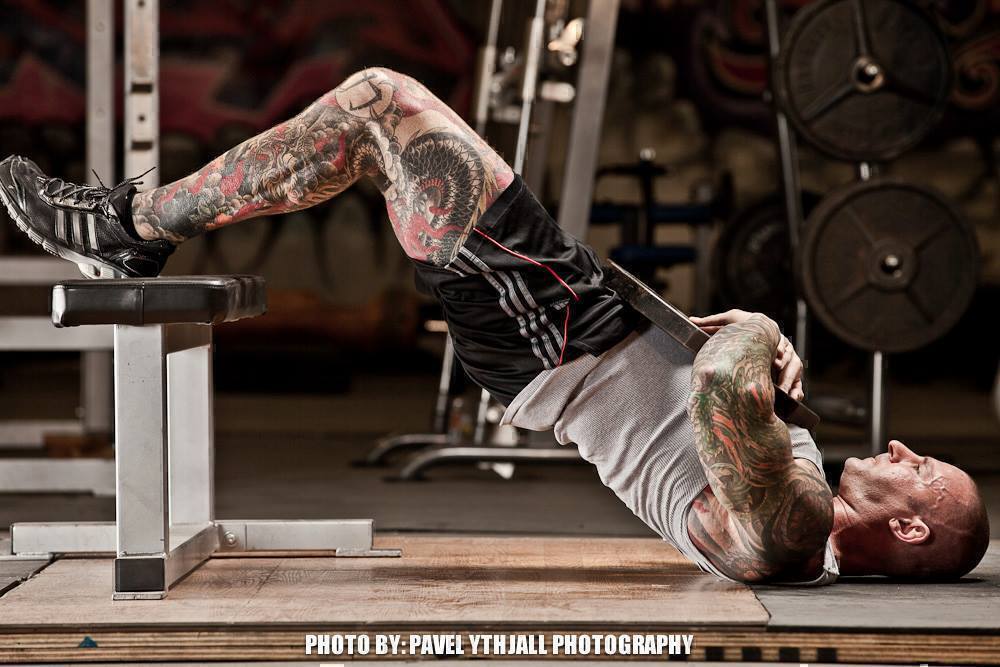SPONSORED
Once you’ve decided what you’re training split is going to be and have picked out the exercises you’re going to do, it’s time to zero in on how many reps to perform for each exercise – the next topic in my “Training Fundamentals” series of articles.
How many reps to perform for a given exercise and in a particular phase of your training depends mainly on your goals. Below, I’ll cover three main rep ranges, explaining how each range helps achieve a specific objective, whether it’s maximizing muscle mass, strength, endurance, or even fat loss.
That said, one thing I need to emphasize right up front is that I firmly believe in incorporating a wide range of rep counts in any training routine aimed at developing size and strength and enhancing overall fitness. What I’m trying to say is, I believe in using ALL of the below rep ranges throughout the course of a year, a month, and even a week of workouts. In fact, I have programs, including my brand-new Down and Up Mass Full-Split routine, that run the rep-range gamut over the course of six weeks or less – from heavy sets of 3-5 reps, all the way up to lighter sets of 30 reps, and everything in between.
But make no mistake, there’s always a rhyme and a reason for why I prescribe a particular rep range in a given week or for a particular exercise. I’ll explain these reasons below as I outline three broad rep ranges.

1-7 REPS
Primary Goals: Strength, power
When the objective is to get as strong as humanly possible, you’ll want to incorporate many sets with reps in the low single digits – 5 reps, 3 reps, even 1 rep. This rep range is the “sweet spot” for developing both strength and power. And while these two training goals go hand-and-hand, they’re not trained quite the same way.
With a true strength workout, the weights used should be heavy, such that your low-rep sets are taken to failure or close to it. With exercises like bench press and squats, I highly recommend using a spotter when going heavy as a safety measure.
When doing sets intended to enhance power and explosiveness, however, the rep counts may look the same as when training for strength, but the weights should be far lighter. Being powerful is defined by speed – the faster you move a weight, the more powerful the movement is. Yet, if the weight is heavy, the speed of movement will be slow. To keep it fast, the weight needs be light (somewhere around 50% of your one-rep max, or 1RM, for the exercise) and the set needs to be stopped well short of failure. Why stop short of failure? Because fatigued muscles will slow down movements as well. Power always equals speed.
The thing about all of these rep ranges is that they overlap one another. For example, a heavy set of 6-7 reps is good for increasing strength, but it can also be effective for adding muscle size. At this point, we’re moving into the next major rep range…
8-20 REPS
Primary Goal: Hypertrophy (muscle-building)
This is a very broad rep range, and in my programs I never prescribe “8-20 reps” for an exercise – usually, I’ll program narrower ranges like 8-10 reps, 12-15, or sometimes 15-20. But the point is, anything that falls into the 8-20 range will be promoting muscle-building first and foremost, whether it’s a set of 8, 10, 15, or 20 reps. If you look at a competitive bodybuilder’s training program, you’re likely to see most sets fall within this range.
One question you may have at this point is: “If this range is used for building muscle, what range is best for burning body fat?” It’s a common misconception that lower reps are for building strength and size, and high reps are for burning fat and achieving more defined muscles. That’s not quite the way it works. Truth is, anything that promotes hypertrophy will also be effective for increasing that muscle definition that everyone desires. Bigger muscles have the potential to be more defined muscles; whether this ends of happening is more a matter of proper nutrition, which I covered in my Understanding Macronutrients 101 article here on GIJobs.com.

20+ REPS
Primary Goals: Endurance/conditioning, hypertrophy
Again, there’s a lot of overlap between rep ranges. Once you surpass 20 reps, you don’t cease to promote muscle-building. In fact, I’m a huge proponent of prescribing rep ranges of 20, 25, and even 30+ for those wanting to build size.
High-rep sets are great for maximizing fatigue and blood flow to the muscles to spark hypertrophy, yet there’s also the benefit of increased muscular endurance and conditioning. Because of this, utilizing high reps is good for both objectives – size and endurance.
Having better endurance will help you in a variety of sports and activities, but it will also benefit you on your heavier sets in the gym. Have you ever attempted to do, say, 4 sets of 8-10 reps on an exercise with a challenging weight, only to fall short of your target reps on the last couple sets? Your muscles were strong on the first set or two, but that strength was zapped by the third and fourth sets because you lacked endurance. Increase your muscular endurance and overall conditioning, and you’ll be stronger on those finals sets as well as the latter part of a long, intense workout.
Periodization: Making Your Rep Ranges Count
As I said at the beginning of this article, I use ALL of the above rep ranges on a regular basis in my programs as a means of enhancing size, strength, endurance, fat loss, and overall fitness. But it’s not just a matter of randomly sprinkling in low reps, high reps, and moderate reps just for the sake of muscle confusion.
It’s not only about variety – it’s about periodization, a key term used in the field of resistance-training to describe the systematic planning of a program over the course of days, weeks, months, and even years.
The topic of periodization is one that I don’t have nearly enough room for in this article, so to learn about the major types of periodization I use in my programs – linear, reverse linear, undulating, and pendulum – visit JimStoppani.com. Not only I do have overview articles explaining periodization in general terms, but I also have specific periodization-themed programs like my “Full-Body Micros” series:
Reverse Linear Full-Body Micros
When it comes to rep ranges, high and low, use them all and use them often!
READ NEXT: CIRCUIT TRAINING 101










